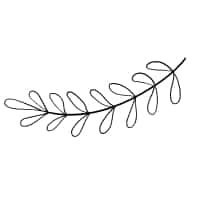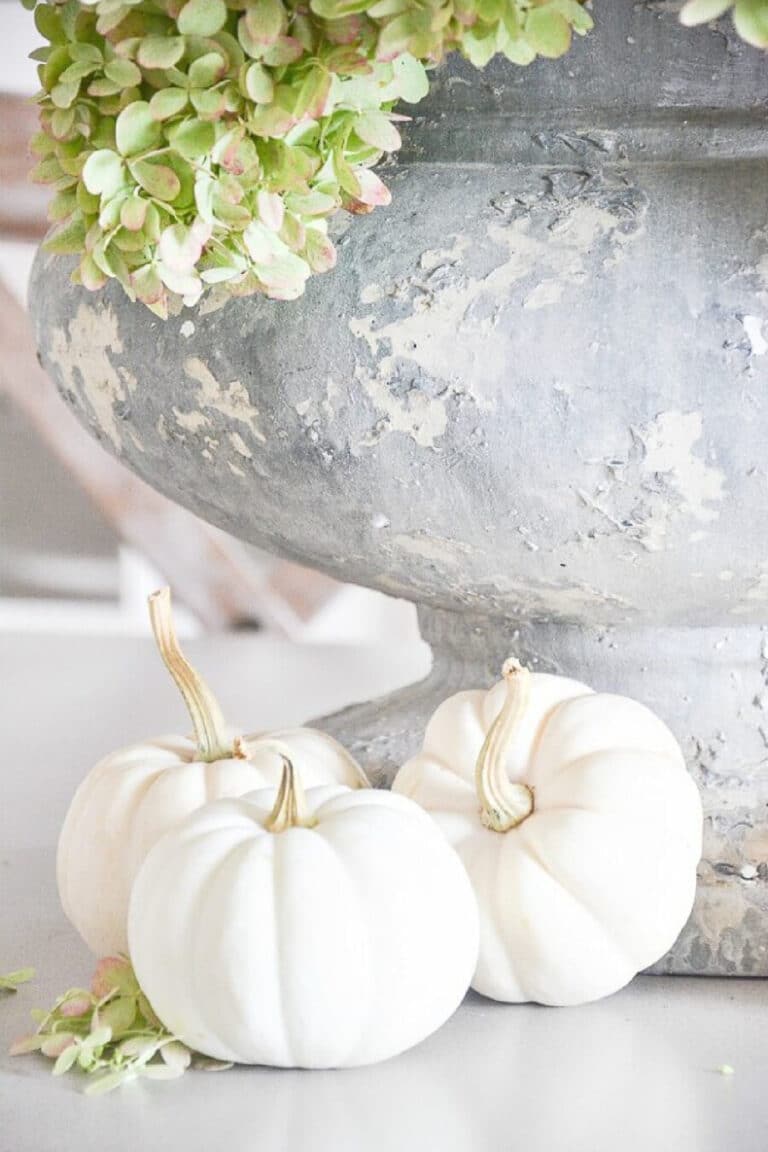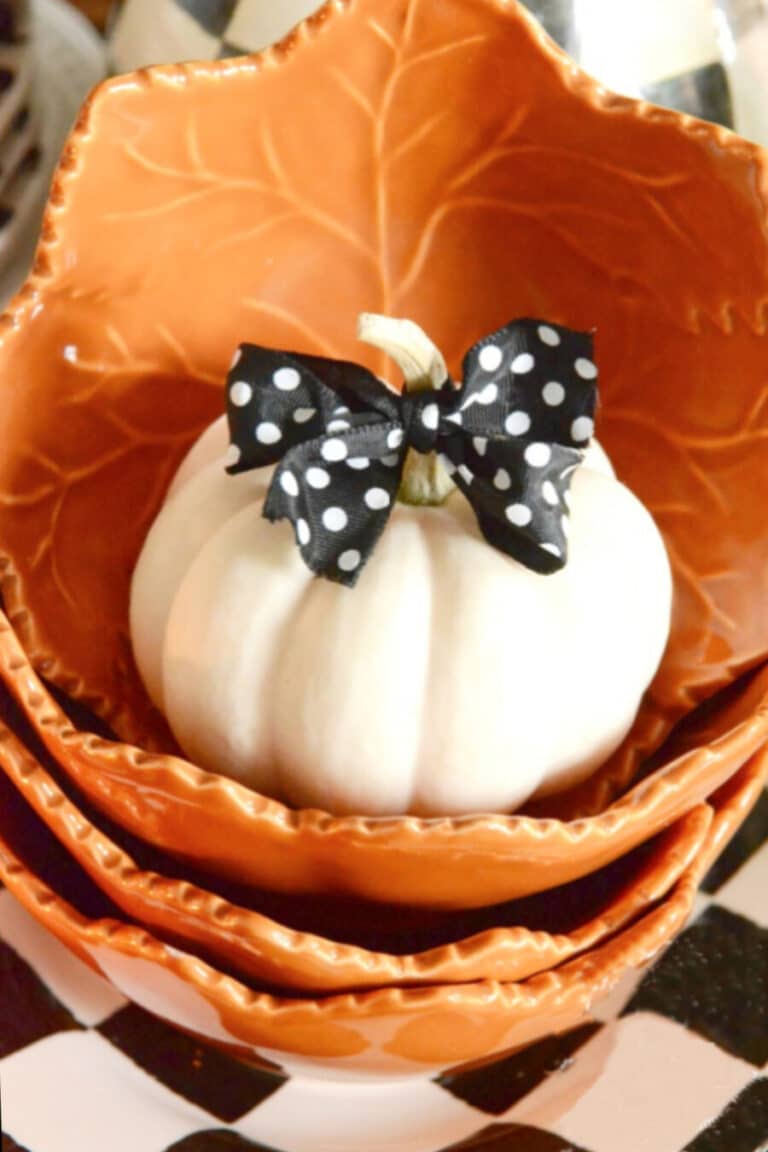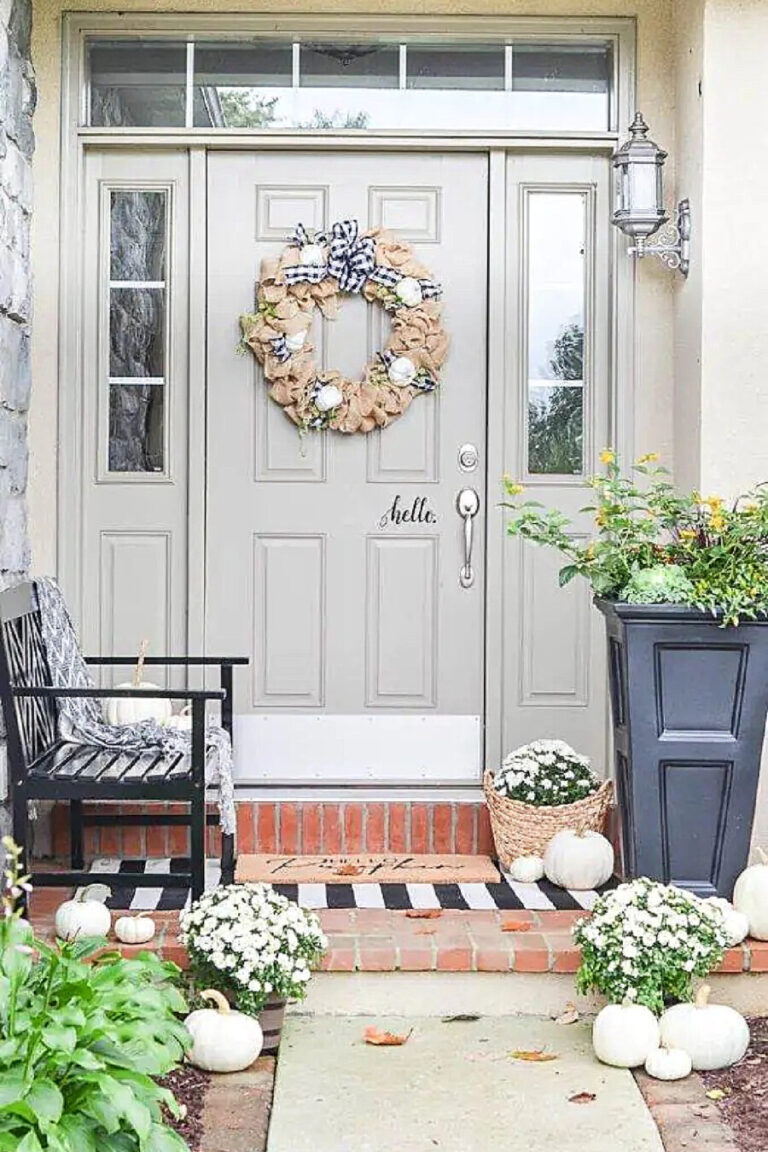Caring For Mums- A guidebook For All Things Mum
Mums are the quintessential fall flower. This guidebook has everything you need to know about caring for mums and keeping them looking their best.

Mums are spectacular fall plants. They can be planted indoors or outside and will reward you with blooms from September until frost. Caring for mums is easy, and with only a few tips, you can keep a mum plants healthy and happy.
Mums are a big bang for your buck, as they are less expensive than most bouquets of flowers. They look beautiful in pots on front porches or back patios, on kitchen countertops, or in the ground lining your front walk!
Here are some helpful, tried-and-true tips for caring for mums and keeping those beautiful fall blooms looking their best.
What Is A Mum?

Mums or Chrysanthemums are a bushy perennial that is part of the aster family, like their cousins, the daisy and sunflower. There are 13 varieties of mums, and they come in various colors, shades, shapes, and sizes. They can be grown as bedding plants in your garden or around your home. And they will also thrive indoors with just a little care.
Florist Mums And Garden Mums
There are two types of mums you want to be familiar with. The first type is florist mums. You typically find these mums in florist’s shops or planted in pots for occasions like Mother’s Day. Think of them as annuals or long-lasting cut flowers. They are often showy, like spider mums, but unsuitable for planting outdoors.
The other variety, the ones we are focusing on today, are garden or hearty mums. These plants are perennials in zones 5 through 9. Hearty mums are known as fall plants because they bloom from September to frost. No other flower represents fall as well as a mum.
I’ve been an avid mum lover and grower for decades. For me, mums and fall go together! And it would not be fall if I did not decorate with them inside.
Planting Mums Outdoors
Mums make a beautiful addition to outdoor spaces. They tend to grow in large clumps or mounds. Whether you plant mums in the spring or fall or indoors or outdoors, you will want to choose hardy mums.
Mums can be planted outdoors in the spring after frost or in the fall before the frost.
If you are planting mums outdoors in the spring, choose a garden mum that is a bit small because its root system can become stronger when the plant does not have to feed a bigger specimen. If you are planting mums in the ground during the fall, choose a big, healthy-looking plant full of buds. The plant’s booming season will be shorter if you pick a mum in full bloom.
Planting Mums Indoors Or Outdoors In Containers

Mums usually come in black plastic containers. You can keep mums right in those containers if they are not too pot-bound. However, putting the plastic container inside another larger, more decorative container is much more attractive. You want to enjoy the beauty of your mum plant, so make sure the container you put them in is decorative.
Replant Your Mum Into A Decorative Container
I know many, if not most, of us keep our decorative indoor mums in their original black containers. However, repotting them is worth the effort since mums in their original plastic posts don’t last as long as repotted mums.
The mums we get in our area are usually planted in heavy soil from the fields where they grow. This heavy soil is not a good choice for keeping mums healthy indoors. So I like to transplant my mums, using good quality potting soil, into a decorative container. A good potting soil offers a healthy environment for mums and ensures good drainage. Here’s how
Removing The Mum From It’s Original Container
Gently squeeze the sides of the pot to loosen the soil and remove the mum. Resist the urge to remove a mum by pulling it out by the foliage. Mums have brittle foliage, and you can break off parts of the plant. Trust me, I’ve done that. Instead, gently turn the pot over and slide the mum out. If the mum is badly rootbound, soak the whole plastic pot in water until it loosens.
Pay Attention To The Roots
When the mum is removed from the pot, I gently remove any clumped soil around the root ball, and if the roots are potbound, I gently coax them apart. Then, the mum is ready to be replanted. I’ve repotted mums for decades, and these tips work!
Choose The Right Container
Plant the mums in a container larger than the pot they came in. This will help ensure a healthy start for these fall perennials.

Add Fall Organics With The Mums

If you have extra space around the mum’s container, tuck items like small pumpkins, gourds, or faux leaves into the pot. This is such a pretty fall look. However, don’t overcrowd or be rough with this plant, as the stems break easily. Gentle is best when handling mums.
A Designer Tip For Planting Mums Indoors Or Outside In Containers

If you are planting mums outdoors in containers like urns or planters, you can plant them en masse or choose other fall-loving plants to go in a container along with them. Make sure you read Designer Fall Planters Done The Easy Way. This post will show you how to have beautiful designer planters for less money and effort.
Plant Or Put Mums In A Sunny Spot

Mums love the sun! So, find a sunny spot outside with at least six hours of sunlight to plant mums. If you are planting mums indoors, choose a sunny place to put them to keep them happy and healthy.
Watering Mums

Mums are thirsty plants. They do not, I repeat, do not like to be dry. Mums get dry surprisingly quickly! However, like most other plants, they also do not like to sit in wet soil.
If you plant mums in the ground, water them in well and give them a little water every day (without making them waterlogged) until they are established.
If you have mums that you have repotted, check the soil daily. Stick your finger into the soil to your second knuckle, and if it feels dry, give your mum a drink. Always water from the bottom of the plant directly into the soil so the leaves and the flowers do not get wet. This will keep them from getting things like mold.
If the foliage of your mum starts to droop or wilt, immediately give your plant a big drink of water. Droopy leaves are a sign of a stressed plant no matter where they are planted.
Mums kept in plastic containers tend to dry out very quickly. Even if the soil seems damp, the roots on the sides of the plants can be dry. To check if your plant needs watering, you can pick up the plastic container, and if it feels light, give it a good soaking.
Another thing I did for years before I transplanted all my indoor mums was to submerge the pot the mums came in my utility sink filled with water for half an hour to give them a good soaking.
Drainage

As much as mums like to be watered, they do not like to stand in water. So make sure any pot you put them in has good drainage.
I break this rule a bit because I have a couple of beautiful urns that don’t have holes to drain out the excess water. In my outdoor urns without drainage, I use small plastic pots my summer annuals come in and line the bottom of the urns with them. You can also use plastic bottles, sticks and twigs, rocks, and more. The idea is to have an area at the bottom of a pot for the excess water to drain so the roots of a mum do not have wet feet.
When I plant mums inside, I don’t always provide drainage. This might make them last less long, but they are easy to replace.
Deadheading Mum

Deadheading is the process of removing, by pinching off or cutting, anything that is not healthy on a plant. Deadhead leaves that are old, dead stems, and dead blooms. This will make sure your mums look their best and are healthy. Deadheading also helps new flowers to form and bloom.
More Helpful Tips For Mums Planted In The Ground
Here are a few more tips that will help your in-ground mums thrive!
Pruning
Inground, established mums need to be pruned. If buds are showing on a plant before July 4th, you must cut or pinch them back so they are four to six inches from the ground. Make sure to cut the flower buds completely off. This helps the plant branch out and become bigger and fuller because mums tend to get spindly and leggy if left to grow independently. Pruning also allows mums to produce more buds and flowers for fall blooming.
Pruning always hurts my heart a little. It’s hard to cut off those little buds! However, it is very good for your plant. I always remember to cut the plant back around the 4th of July.
Wintering Over And Mulching
When mums die in the winter, do not break or cut off the dead branches. These dead branches help to protect the mum’s crown. Mums have short root systems and need to be protected from winter conditions like hard frosts and dryness. Mulching helps a plant to stay healthy. Add about two inches of mulch around your mums.
When new growth starts to peek out of the soil in early spring, you can carefully break off or cut the old stems and compost them.
Fertilizing
Mums planted in pots indoors or outside do not need to be fertilized. Mums planted in the ground do best if given nutrients to help them grow and stay healthy. No matter when you plant them, feed them with a water-soluble fertilizer from early spring through July. This will help these heavy feeders to grow strong.
Dividing Mums
Inground mums can be divided when the center of the plant begins to look thin, about every three to four years. You will notice the center looks woody, and the plant will begin to have a crown effect with healthy plants growing around the outside of the center. This is because the healthy roots are on the outside of the plant.
Dig up your inground mums in early spring when new shoots begin to show. Divide them and replant them in a sunny spot with well-drained soil. Make sure to water them in well.
How To Care For Cut Mums

Since we are talking about mums, let’s talk about cut mums. They are easy to find in your local grocery store. Cut mums make great arrangements in the fall and add organic fall beauty to our homes. Mums are one of the longest-lasting cut flowers, and they will stay fresh with just a little care.

Here are a few important things to do to keep cut mums looking their best…
- Strip flowers off each mum stem below the water level in the vase.
- Change the water every other day.
- Keep mums in a cool place away from sunlight once they are cut.
Are Mums Pet Friendly
According to the ASPCA, mums are toxic to dogs, cats, and horses. So, if you have pets, keep this in mind when bringing mums into your home.
Deer eat mums and can smell them from a great distance. Although these plants are not their favorite food, a very hungry deer will make a meal of mums planted around your home.

I hope you will find a space in your home for these quintessential fall plants now you know these simple tips for caring for them.
Just for fun…what is your favorite color, mum? Tell us in the comments!

FAQs About Mums
More FALL Inspiration
Find fall decorating ideas and inspiration for inside your home and out!

Happy Fall!











Yvonne, in all the years I’ve been following you, I have never taken the time to THANK YOU for sharing your thoughts and creativity with us. It’s been a pleasure to see your surroundings and your projects and the evolving look of your beautiful home. Just wanted to say thanks and let you know how appreciated you are! =)
Oh, my goodness! Thank you so so much! How nice to hear, Mary
Fall is my favorite season! Thanks for all your great suggestions. Off to searching for mums!
I love your beautiful set-ups! Where did you find the large container (looks wooden) that is on your table?? It’s gorgeous!!
Here you go:https://rstyle.me/+8GEX8nom1l8mTOHcKZ7IFg
Thank you so much for this post Yvonne. It was very informative so I learned so much! I love fall and everything that comes with it! I’ve always liked your style of decorating and you never disappoint. Have a great week.
Hi Jeannette! Happy Fall. Thank you for your lovely comment.
Thank you so much for the great info on mum care. I’ve sent it to a friend who is receiving mum plants as a gift in a few weeks. Love your blog!
Mums are a fall treasure and with just a little care can thrive indoors. Thank you for sharing this post with your friend.